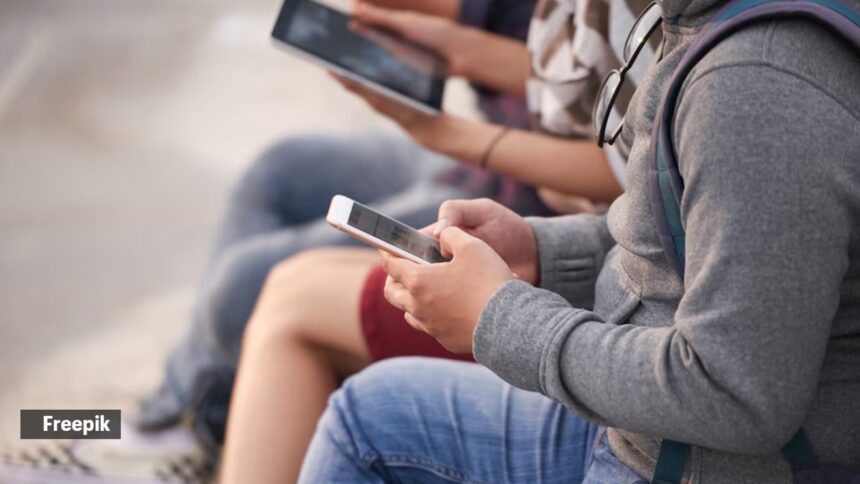Piyali Bhattacharya’s daughter, 15, manages her own Instagram account. Often, Piyali’s husband forwards her the stories their teen has posted, asking, “Have you seen this?” Piyali, with pride, replies, “I have. She shows me everything before posting.” But not all parents can say the same.
Priyanka Khurana’s daughter, 11, already has more Instagram followers than she does. “We started her account when she was nine, just to document memories,” Khurana said. “But watching us use social media soon inspired her to post reels and chat with friends.”
It did not take long for boundaries to become necessary. “Now, she gets an hour a day for games and posting, but only after completing homework and chores. On holidays, she gets more time,” Khurana said.
However, the transition was far from smooth. At one point, the pre-teen protested, “Aap log bhi toh karte ho, toh main kyu na karu?” (Both of you use your phones, so why shouldn’t I?). That prompted Khurana and her husband to reduce their own screen time and focus on family activities. Today, her daughter’s feed is mostly age-appropriate, filled with friends’ posts and BLACKPINK music videos.
—
Parenting teenagers can often feel like tiptoeing across a minefield—one wrong step and boom! Add social media to the mix, and concerns about keeping young minds safe from inappropriate experiences grow even louder.
If you have been scrolling through Meta’s platforms lately, you might have come across ads announcing the launch of “Instagram Teen Accounts”. The new update comes as a reassurance to parents that their teens can now have safer experiences on the app, thanks to built-in protections. According to Instagram’s official website, here are some of the features that fall under the category:
Private accounts: Teen Accounts are private by default. They must approve new followers, and strangers cannot see or interact with their content.
Messaging restrictions: Teens can only receive messages from people they follow or are already connected with.
Sensitive content limits: Exposure to sensitive content, like videos of fights or promotions for cosmetic procedures, in Explore and Reels tabs are restricted.
Limited interactions: Teens can only be tagged or mentioned by people they follow. They also receive notifications encouraging them to take breaks after 60 minutes of use each day.
Instagram Head Adam Mosseri breaks down these features further in a video shared below:
Mehezabin Dordi, clinical psychologist at Sir H N Reliance Foundation Hospital, , said the introduction of this feature is a thoughtful step in the right direction. “Creating a safer digital environment for young users is important, and tools like restricted content, reminders to take breaks, and better privacy controls can make a real difference at a time when teens are still figuring out their identity and self-worth,” she said.
Though Piyali doesn’t monitor her daughter’s chats, open conversations about sensitive topics like pornography and peer interactions, especially with the other gender, help her daughter navigate issues with confidence.
Soma Banerjee shared a similar story. When inappropriate ads popped up on her son’s phone, he asked her for help. “I explained how algorithms work to lure people,” said the mother of the 16-year-old wondering how to get rid of something he didn’t invite in the first place.
Dr Rahul Chandhok, head of psychiatry at Artemis Lite NFC, New , believes parental monitoring gives an assurance of security and trust, and lowers the mental burden of interacting with online sources independently. “As teens move into adulthood, early exposure to healthier online spaces can help them build a more balanced relationship with social media, protecting them from issues like addiction, depression, and low self-esteem,” he said.
When Shampa Sen’s 14-year-old son asked for an Instagram account a few years ago, she discussed it with him. Worried about the addictive nature of and the impact it could have on his academic performance, Sen was skeptical. But, instead of dissuading him from getting on the app, she asked him all the reasons why he felt the urge to do so. “I want to connect with my school friends,” came his reply.
Understanding the peer pressure, she offered him the choice but explained the downsides. Ultimately, he decided to browse occasionally using her account. “A middle path that satisfied both,” Sen told .
Palkee Baruah, a clinical psychologist, warned that outright bans are neither practical nor necessary, and often backfire, pushing teens toward unsafe, less regulated spaces. According to her, such blanket bans can also cut off important conversations around digital safety, consent, and emotional boundaries. “Teens may build superficial online relationships that leave them feeling isolated,” she said. Worse, lack of supervision can sometimes lead to juvenile sex crimes, especially when platforms do not filter or monitor messages effectively.
While tools like Teen Accounts are helpful, they are not a cure-all. “If teens rely only on platforms to regulate habits, they miss learning how to self-regulate and make mindful choices,” said Dordi. “We don’t want to create dependency or send mixed messages about what is “safe” or “normal,” if those decisions are being made by algorithms that aren’t always transparent or inclusive,” he said.
Instagram Teen Accounts can be a good start, of course, but real-world conversations around autonomy, resilience, and healthy tech use are equally vital.
At the end of the day, helping means giving them more than just protective features. It’s about building their digital literacy, nurturing emotional intelligence, and encouraging open conversations. “Teens need guidance, not just restrictions; and they need adults who will listen, support, and help them build the skills to navigate the online world with confidence,” said Dordi.








